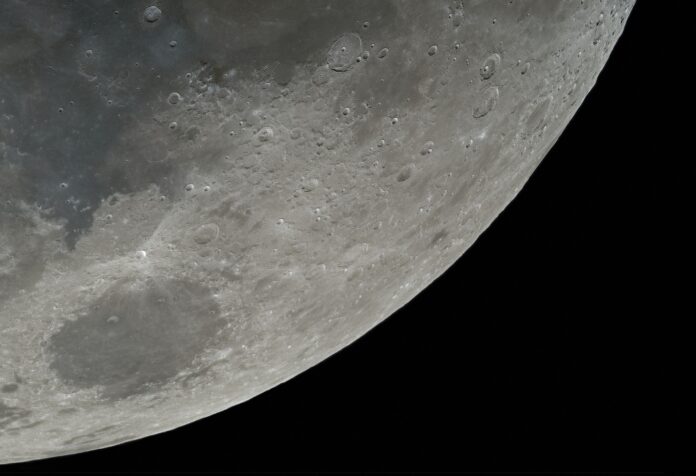The year in space is off to a strong start for 2025 as two lunar landers from private companies — Texas-based Firefly Aerospace and Tokyo-based iSpace — have officially launched from Earth and are now headed for the moon.
This moment represents the first time two landers from different nations have launched on the same rocket, having taken to the sky on a SpaceX Falcon 9 rocket during the early hours of January 15, 2025 at 1:11 a.m. EST.
The Flight of the Blue Ghost
The Firefly lander kicks off the company’s Blue Ghost series of missions, designed to deliver payload services to the surface of the moon. This inaugural Blue Ghost mission, dubbed “Ghost Riders in the Sky,” is responsible for transporting 10 NASA payloads consisting of technologies that will inspect the moon’s environment and provide findings critical to future human moon landings.
The delivery of payloads on Blue Ghost 1 carries significance as part of NASA’s Commercial Lunar Payload Services (CLPS) program. The previous two contracted missions through the program saw mixed results: Astrobotic Technology’s Peregrine Mission 1, launched in January 2024, suffered a propellant leak that rendered it unable to land on the moon. Intuitive Machines’ Odysseus lander (IM-1) launched in February 2024, but tipped upon landing — it was, however, still able to function, serving as the first commercial mission to soft-land on the moon.
All eyes are now on Blue Ghost 1, which has a targeted moon landing of March 2, 2025. The lander will touch down at Mare Crisium, a large basaltic plain on the lunar near side. It will take 45 days to reach the moon: 25 will be spent in Earth’s orbit, 4 in lunar transit, and then 16 in lunar orbit before descent onto the moon’s surface. There, it will conduct surface operations for one lunar day (roughly equal to 14 days here on Earth) and continue collecting data several hours into the lunar night.
Read More: NASA’s LEXI Shoots to the Moon to Take First Full Images of Earth’s Magnetic Field
Studying the Moon With Payloads
Meanwhile, the 10 NASA payloads onboard will administer a multitude of tests; the payloads’ goals include drilling the moon’s surface to study lunar heat flow, checking for signals from satellites to support future navigation, and measuring the adherence of regolith (lunar dust) on materials to better understand its effect on mechanical components.
One instrument will even inform scientists about some of Earth’s properties: the Lunar Environment heliospheric X-Ray Imager (LEXI) will capture X-ray images that will show how solar wind interacts with the Earth’s magnetic field, a process that occasionally causes issues with satellites, but also creates stunning instances of aurora borealis in the atmosphere.
The Blue Ghost 1 mission is anticipated to make major strides for the CLPS program, and later down the line, two additional Blue Ghost missions will also head to the moon: Blue Ghost 2 in 2026 and Blue Ghost 3 in 2028.
As for the rest of 2025, NASA has a busy schedule when it comes to moon missions. It expects to deliver payloads to the moon’s south pole via three missions throughout the year: IM-2 (featuring Intuitive Machines’ Nova-C lander) in February, TO 20A (featuring Astrobotic’s Griffin lander) in September, and IM-3 (also featuring a Nova-C lander) in October. One of NASA’s main objectives at the moon’s south pole is to search for water ice deposits, which could play a crucial role in future missions.
Read More: The Water on the Moon May Trace Back to Early Earth — and Comets
A Mission Guided By Resilience
Joining Blue Ghost 1 on the Falcon 9 launch is Japanese spacecraft company iSpace’s lander, called “Resilience.” The lander is the driving force behind the company’s second attempt to reach the moon, the Hakuto-R Mission 2. The first attempt in 2023, Hakuto-R Mission 1, ended in a lander running out of fuel and crashing onto the moon.
A renewed resolve to reach the moon has energized the current mission, bearing the optimistic motto “Never Quit the Lunar Quest.” To save energy, the mission will take a different, slower path than Blue Ghost 1 — the Resilience lander will essentially fly past the moon and, months later, return to get looped back into its orbit. Ultimately, it will land about four or five months after launch.
Resilience carries several payloads, including instruments to monitor radiation levels during the mission and test the feasibility of cultivating algae as a food source in space. In addition, it’s bringing along iSpace’s own micro rover, called Tenacious, which will have the task of exploring the landing site (a region on the lunar near side called Mare Frigoris) and collecting regolith.
What Will the Future Bring?
Looking forward, aerospace companies like iSpace are also concerned with figuring out how to extend the lifespan of equipment that lands on the moon. This is because most standard equipment cannot survive the debilitating environment of the lunar night, when temperatures can drop to negative 280 degrees Fahrenheit.
Despite the setbacks experienced in commercial spaceflight in recent years, hopes are high for the current moon missions. The successful launch of Blue Ghost 1 and Resilience has marked a triumphant start to the year, and the ongoing journey of the two landers will undoubtedly set the tone for both the future of this industry and for science in space.
Article Sources
Our writers at Discovermagazine.com use peer-reviewed studies and high-quality sources for our articles, and our editors review for scientific accuracy and editorial standards. Review the sources used below for this article:
Jack Knudson is an assistant editor at Discover with a strong interest in environmental science and history. Before joining Discover in 2023, he studied journalism at the Scripps College of Communication at Ohio University and previously interned at Recycling Today magazine.
Source : Discovermagazine






